AAP part of international anti-India racket: Parts 1 & 2
18, 19 Apr 2014To begin with, some political commentators had speculated that one or more larger players must be behind the inexplicable projection of India against
Corruption (IAC) and its offshoot, the Aam Aadmi Party (AAP), in the media and political scene. Then,
India News broadcast a story of an
American student Shimrit Lee who had met Manish Sisodia before the Jan Lokpal movement was launched. It was found that Egypt had erupted after her visit to that country too. Third, Ashwini Upadhyay, former head of the AAP’s legal cell, who has known Arvind Kejriwal and Manish Sisodia since the inception of their NGOs,
revolted on the ground that the party had links with the US’s Central Intelligence Agency (CIA). Then journalist-researcher
Madhu Kishwar exposed links of Rajmohan Gandhi, the AAP’s paratrooped candidate from the East Delhi Lok Sabha constituency, with terrorists.
Finally a larger network of miscreants, Maoists, Marxists, evangelists, tablighis,terrorists, India bashers and financiers of disruptive activities in this country helping the AAP has surfaced.
To understand how the entire international network works, the personnel connecting one nefarious organisation to another must be studied.
On July 19, 2011, two people of Pakistani origin were arrested in Washington DC. The USDepartment of Justice records describe one of them, Ghulam Nabi Fai, as an agent of Pakistan’s Inter-Services Intelligence (ISI). The New York Times reported that Fai was coordinating between the activities of several ultra-communist groups, Islamist outfits and Christian missionaries in India.
Fai once worked closely with Rajmohan Gandhi, the AAP’s paratrooped candidate from the East Delhi Lok Sabha constituency. Gandhi was one of the prominent signatories to the petition by 53 odd well-networked ‘liberals’ like Ved Bhasin and Gautam Navlakha that defended Fai and demanded his release from the American jail. People already know where sympathies of elements like Bhasin and Navlakha lie.
Kishwar recorded an interview with Sai Lal Jediya, son of a Gandhian freedom fighter late Hira Lal who lived in Panchgani where the headquarters of the AAP candidate’s Moral Re-Armament (MRA), now called Initiatives of Change, are located. The MRA has long been suspected of being a front of the CIA.
Madhu Kishwar writes in her website, “Sai Lal has documentary evidence to back up his charges…” She adds Gandhi instigated Hira Lal to foment separatist movements in Nagaland and other border areas of the Northeast. Sai Lal alleges that the MRA headquarters in Panchgani, Maharashtra, are centres of CIA-backed anti-national activities in India, including holding training camps for terrorist groups.
Niti Central now goes beyond the revelations above to unearth more skeletons in the AAP closet.
Fai sought the help of a US resident, anthropologist-activist Angana P Chatterji, who supports the cause of Kashmir’s separation from India, to further his agenda. The California Institute of Integral Studies (CIIS) suspended Chatterji along with her husband Richard Shapiro in July 2011 and dismissed them in December 2011, after it received complaints from students against them. The CIIS Faculty Hearing Board found them guilty of failure to perform academic duties and violation of professional ethics. Shapiro has been declared persona non grata in India for his separatist activities.
Ironically, before Chatterji was expelled, US-based advocacy group Indian Muslim Council (IMC) had given her the Tipu Sultan Award in 2008, and the CIIS celebrated the felicitation. What kind of a profile should one have to get this award? Readers will find mention of two more recipients of this prize in this report later on, from where they may draw their conclusion.
Chatterji happens to be a co-author of the book, Kashmir: The Case for Freedom, whose other authors are Arundhati Roy, Pankaj Mishra, Hilal Bhatt and Tariq Ali.
Fai, Chatterji and Roy are associated with at least one or more of three anti-Indian organisations: The ISI, Indian-American Muslim Council (IAMC) and Progressive South Asians (PROXSA).
The IAMC website gives the notorious Students Islamic Movement of India (SIMI) a clean chit and projects India as a dangerous place for minorities to live in. The IAMC supports Harsh Mander, who is now a prominent AAP member. It also hosts Harsh Dobhal, managing editor of Combat Law, a Maoist magazine, and secretary of the Independent People’s Tribunal (IPT) that damned India through its “Report of Independent People’s Tribunal on Human Rights Violations in Kashmir” published in 2010. The IPT report was published by the Human Rights Law Network (HRLN) that projects Hindus as a horrible majority population in India that persecutes Muslims, Dalits and Christians.
The HRLN’s agenda is furthered internationally by Germany-based Evangelischer Entwicklungsdienst (EED), Britain-based Christian Aid, Denmark-headquartered DanChurchAid and India-based Church Auxiliary for Social Action (CASA) among other forces that sees India divided along Hindu-Christian lines.
The IAMC often hosts India haters like John Prabhudoss alias PD John, Lise McKean and Raju Rajagopal. PD John or John Prabhudoss is the executive director of the Policy Institute for Religion and State (PIFRAS).
In the 2002 PIFRAS symposium on South Asia, Prabhudoss had, in his opening remarks, compared the conflicts in India to those of the Middle East, Sierra Leone, Central Africa, Kosovo, Chechnya and East Timor, thus equating India with some of the most cruel and violent regions in the world.
Rajiv Malhotra and Aravindan Neelakandan documented Lise McKean’s hatred towards Hindus and India in their book, Breaking India. “Whenever there is unrest in India, she shows up as a commentator to educate American audiences about what is wrong with Indian culture,” they write.
Raju Rajagopal is the president of self-styled Coalition against Communalism. His Hindu-hating articles used to be hosted by the EKTA website, known for promoting subversive elements in the country, till it was active. The trio works with Jesuit priest Cedric Prakash who finds Hindus tormentors of Christians. Rajagopal was the recipient of IAMC’s Bahadur Shah Zafar Award for “promoting pluralism and communal harmony in India” in 2008.
The PROXSA is an umbrella organisation for 300 extremist Leftists who are members of more than 20 outfits sporting different fancy names. The most prominent of these outfits are the Alliance for a Secular and Democratic South Asia (ASDSA), Alliance for South Asians Taking Action (ASATA), ASHA for Education, Association of South Asian Progressives (ASAP), Coalition for a Secular and Democratic India (CSDI), Campaign to Stop Funding Hate (CSFH), Centre for Study and Research in South Asia (CERAS), Coalition against Communalism (CaC), EKTA, Forum of Inquilabi Leftists (FOIL, earlier called Federation of Indian Leftists), Foundation for Pluralism (FfP), Friends of South Asia (FOSA), Indian Progressive Study Group of Los Angeles (IPSG-LA), NRIS for Secular and Harmonious India (NRI-SAHI), International South Asia Forum (INSAF), Organising Youth (OY), South Asian Collective (SAC), South Asian Magazine for Action and Reflection (SAMAR), South Asian Network for Secularism and Democracy (SANSAD), South Asian Progressive Action Collective (SAPAC), Supporters of Human Rights in India (SHRI), Voices for Freedom (VfF), Youth Solidarity Summer (YSS) and the Association for India’s Development (AID).
After the collapse of Maoism in India, some elements of the Communist Party of India (Marxist–Leninist) [CPI(ML)] moved to the US and, after a sabbatical, tried to revive the movement in this country, handling it from their American bases. Out of the outfits named above, the FOIL and AID were floated by these people.
The FOIL describes itself as a “clearinghouse for radical Indian activists in the United States, Canada and England”. Its purpose is described by its founders as “some place for us to share information, offer support, and encourage each other to write in the open media on issues pertaining to Indians overseas and India itself, and help build projects that make our radical politics more material”. Two of the FOIL’s co-founders are American Marxist-yet-evangelist Biju Mathew and Marxist historian Vijay Prashad. These are the people behind the propaganda in 2002 that the riots that took place in Gujarat that year were funded by Hindutva groups in America. Prashad happens to be a supporter of the now-failed Arab Revolution. He says Hinduism in its present form is nothing but a mix of Fascism and racism, and that the Bharatiya Janata Party (BJP) is personification of such ideology and, therefore, it must be condemned.
Three years before Chatterji, Mathew had received the Tipu Sultan Award for “courageously serving India and India’s interests” from the IMC.
The AID is the other prominent outfit under the PROXSA. It facilitates funding to various leftist extremist outfits by showing the financiers legally valid ways of routing the money. On different pages of the AID website, one finds campaign material for Binayak Sen and Kopa Kunjam, criticism of Salwa Judum, critique of Operation Green Hunt, Land Acquisition Act, Chhattisgarh administration and police etc.
The AID also collects funds for the AAP. On September 20, 2011, The Times of India had reported that “Arvind Kejriwal’s NGO Parivartan was supported by AID in 2008 to pursue the RTI campaign”. A page on the AID website shows it was, in 2011, soliciting money for IAC as well. Another page on the website hosts an article by Prashant Bhushan criticising the Government’s version of the then Lokpal Bill.
In quite a few other pages of the website, Arvind Kejriwal has been described as “AID Saathi”, including one where the outfit is seen soliciting donations for the AAP. Further, AID sent its volunteers to the AAP to help the party in its campaign for the Delhi Assembly elections.
AID co-hosted an event with the radical Council on American Islamic Relations (CAIR). Communications director and civil rights coordinator of the CAIR, Randall Ismail Royer was arrested and convicted for conspiring with Lashkar-e-Tayyeba to execute terror strikes in India. Royer had earlier pleaded guilty to charges of using and discharging a firearm during — and in relation to — a crime of violence; and with carrying an explosive during commission of a felony. A decade before that, he had joined the Bosnian Forces fighting Serbs in 1994.
Royer was the third person with ties to CAIR’s leadership who has either been convicted, or is under suspicion of aiding militant Islam. Several other CAIR officials have either proven or suspected ties to militant Islam. Bassem K Khafagi has pleaded guilty to charges of visa and bank fraud in federal court in Detroit. Charges were brought against Khafagi for his role with the Islamic Assembly of North America. Khafagi was community affairs director for CAIR at the time of his arrest. On February 2, 1995, Siraj Wahhaj was named as one of the “unindicted persons who may be alleged as co-conspirators” in the attempt to blow up targets in New York. Wahhaj, on CAIR’s advisory board, was described by CAIR as “one of the most respected Muslim leaders in America.”
The most paradoxical ideology of the CAIR involves helping Leftist extremists in India but promoting Islam in the US, which it wants to turn into the world headquarters of Islamic movements in this century.
Shockingly, a member of this sinister circle is Sugata Bose, grandnephew of Subhas Chandra Bose, whose acceptance of Government of India’s version of Netaji’s death was proved ill-informed or politically motivated (or both) last year by author Anuj Dhar through the book, “India’s Biggest Cover-Up.”
Bose had co-authored a book, “Modern South Asia: History, Culture and Political Economy’, with Ayesha Jalal, a Pakistani-origin professor of history at the Tufts University in 1998. The book glorified Mughal bigot Aurangzeb as the best ruler India had ever had. Bose, Jalal and Chatterji (associate of Fai and Roy mentioned early in this report) have together, on numerous occasions, issued statements that reflect the Pakistani point of view on Kashmir.
Now we come to another wing of this international mafia. In 1999, Teesta Setalvad and her husband Javed Anand’s magazines Sabrang and Communalism Combat had, through their channels in the Indian National Congress, Communist Party of India (CPI) and Communist Party of India (Marxist) [CPI(M)], extracted $15 million to project the BJP as an anti-minority, anti-woman party. Recently, the couple accepted that they had diverted part of the fund for their NGO for personal use. Some of their witnesses in the cases related to the riots in Gujarat in 2002 have turned hostile and accused the couple of putting words in their mouths via signatures and thumb impressions on affidavits submitted to the court, whose contents were dictated at will by Setalvad.
Finally, let’s see how all these people and their shady organisations are connected to each other. In 2000, Australia-based International Council of Evangelical Churches had instituted the International Award for Religious Harmony in the memory of slain Graham Staines. This award was first given to All India Christian Council’s general secretary John Dayal, known for his Dalit-Christian persecution complex and association with the infamous Dalit Freedom Network.
In 2003, the award went jointly to Setalvad and Admiral Laxminarayan Ramdass. The latter went on to become the AAP’s internal lokpal while almost his whole family was posted in the party’s policy committees.
Kaleem Khwaja of the Association of Indian Muslims in America, infamous for his article, “Brother, can you spare a tear for Taliban,” published by the Milli Gazette, is another recipient of IMC’s Tipu Sultan Award.
We will now see how the AAP is linked with this international racket. Kejriwal received the Ramon Magsaysay Award after he was promoted by National Advisory Council’s Aruna Roy following citation of his work by the World Bank. Documents of the CIA show its links with the Ford Foundation, Rockefeller Foundation and the Ramon Magsaysay Foundation. The papers show how these foundations financially support intellectuals, students and activists across the world through mutual coordination. Our focus is on the AAP.
The World Bank featured the insignificant work of Parivartan in their report, “Social Accountability Stocktaking Exercise for South and East Asia” [World Bank Institute, Washington DC, 2005, pages 30-32]. Kejriwal was selected for the Ramon Magsaysay Award only after featuring in the World Bank report above. Narayana Murthy, the Infosys chief, is a Trustee of the Ford Foundation. He apparently advocated Kejriwal’s case for the award, as did Aruna Roy.
The CIA’s unusual interest in the AAP is evident in the fact that in 2012, right after the party was registered by the Election Commission of India, the American spy agency released a list of “significant” parties in this country. Every party that featured in the list except the AAP was a recognised party — one that has participated in elections in at least four States of the country and secured 6 per cent of the total votes polled. This, when the AAP was just one month old with no record of participation in elections!
A few years before that, a New York University researcher Shimrit Lee visited Manish Sisodia’s NGO Kabir and prepared a report, “Public Power: India and Other Democracies” (2010). She assisted in Kabir’s campaign for the Right to Information (RTI) and Local Self-Rule. She went on to work actively in Egypt. Is it mere coincidence that, while the IAC launched the Jan Lokpal Movement in India after she left, when she went to Egypt and left that country, it witnessed the Tahrir Square uprising? The Union Home Ministry has no record of Kabir having sought its clearance to host a suspicious researcher who has been active in some countries of the Middle East and Chad in Africa, required as per law of the land.
The Union Home Ministry does not come across as clean in this whole deal either. While Kabir was registered in 2007, Sisodia had got the ministry’s clearance to receive foreign funds in 2005! This is evident from the official papers Upadhyay has unearthed and handed over to this correspondent.
Did the Home Ministry bend the rules for Kabir at the behest of the Congress? If not, what was Kejriwal doing with Sonia Gandhi acolyte Ashish Talwar in Germany in 2005, Upadhyay questions. And why is Talwar now the head of the AAP’s Delhi unit?
The World Bank had committed a similar fishy act in 2002. It funded Kejriwal’s Jan Sunvai activity when his NGO was not even registered. And several of the donors of NGOs of Kejriwal and Sisodia mentioned above went on to adjudicate who would get the Ramon Magsaysay Award for the year 2006!
Kabir received funds from the Ford Foundation (Rs 86,61,742), PRIA (Rs 2,37,035), Manjunath Shanmugam Trust (Rs 3,70,000), Dutch Embassy (Rs 19,61,968), Association for India’s Development (Rs 15,00,000), India’s Friends Association (Rs 7,86,500), United Nationals Development Programme (Rs12,52,742) while Rs 11,35,857 were collected from individual donations between 2007 to 2010.
Ford Foundation India Representative Steven Solnick admitted on 31 August 2012 that Foundation’s last instalment to Kabir was donated in 2010. “Our first grant to the NGO was of $ 1,72,000 in 2005; the second was in 2008 of $ 1,97,000”, he said, adding that the Magsaysay Award for Emergent Leadership was funded by the Ford Foundation.
Lawyer Manohar Lal had filed a PIL in the Delhi High Court — WP (C) 3412/2012 — on 21 May 2012 against the dubious means NGOs employed to receive foreign funds. Following this, Kabir was raided by the Union Home Ministry officials for a suspected violation of Foreign Contribution Regulation Act (FCRA) on 22 August 2012 after a court order. Following these developments, the Government lawyer submitted to the court that the state could lay its hands only on minor billing discrepancies in Kabir’s account (as well as in the account of an NGO run by Kiran Bedi).
Two months ago, however, the controversy surrounding Kabir resurfaced in newspapers with evidence of Sisodia misappropriating the foreign funds received by Kabir. Moreover, the papers revealed that Kejriwal is a part of Kabir, too.
Kejriwal’s NGO network goes beyond PCRF and Kabir. He also heads Parivartan that claimed it “is not registered under any Act as a society or a trust or a Company. It is a people’s movement. For Income Tax purposes, it is an Association of Persons.” However, it had advertised through various mediums in June 2002 that “all donations made to Parivartan are tax exempt under section 80 G. Parivartan is also registered under section 12A of Income Tax Act.” This is misleading as its present document says, “Parivartan Foundation for Socio Economic Development filed for tax exemption to donors under Section 80G on 10 August, 2009. The permission was granted on January 8, 2010 and was valid for all donations between April 1, 2009 and March 31, 2010. This has been further extended through an order dated March 29, 2011 for all donations from April 1, 2010 to March 31, 2013. The foundation also has clearance under Section 12AA of the Income Tax Act, 1961.”
Kejriwal represented Sampoorna Parivartan, too. The secretary of this NGO worked in the Commission Advisory Committee of the Delhi Electricity Regulatory Commission, which was constituted vide notification F1(135)/DERC/2000-01/5092 Delhi, March 27, 2003. This implies that the responsibility of power rate hike and installation of faulty metres that the AAP has been crying foul about partly lies on people associated with this very political party!
The website of both Parivartan and Kabir were withdrawn when they came under scrutiny in 2012. Even the Ford Foundation hid all the details about funding to Kabir when some blogs revealed their IAC/AAP connection in October 2012.
We can now see the circle complete with the Ramdas family — L Ramdas, Kavita N Ramdas, Lalita Ramdas and Sagari R Ramdas — as a vital link between anti-India organisations, Ford Foundation and the AAP. While the admiral was felicitated by evangelists, his daughter Kavita is the India representative of Ford Foundation and married to Zulfiqar Ahmad, a writer and researcher on peace and security issues in South Asia and the Middle East; this vocation gives him an opportunity to hobnob with other ‘South Asia experts’ and activists mentioned in this report. Admiral Ramdas’s wife Lalita Ramdas and the other daughter Sagari Ramdas are in the AAP’s policy committees, too.
The leftist and
disruptive outfits named in
part 1 of the report may appear mutually independent, but there is at least one person who is associated with two or more of these groups to link them all together.
We now come to Medha Patkar, the ubiquitous activist who is known not only for herNarmada Bachao Andolan (NBA) but also for surfacing in support of agitations happening anywhere in India — from the protest against setting up of the factory to manufacture Tata Nano in Singur, West Bengal, to that against the Government for delaying the enactment of Shanti Bhushan’s draft of Lokpal Bill, named by the self-styled India against Corruption (IAC) as the Jan Lokpal Bill.
Medha Patkar has worked with Angana Chatterji who was named in the first part of this report. The email correspondence between the NBA head and Patrick McCully, former director of the Berkley-based International River Network (IRN), is insidious. When theSupreme Court dismissed NGO National Council for Civil Liberty’s (NCCL’s) PIL on rehabilitation of people allegedly displaced by the Sardar Sarovar project on July 10, 2007, Patkar sent the information to McCully immediately. Two days later, McCully replied, “You have mentioned in your message (email) that Judge Thakkar (CK) is ex-chief justice of Gujarat and anything can happen. How you manage this. What was the second judge?”
The next day, Patkar wrote that McCully had made a mistake in quoting Thakkar as an ex-chief justice of Gujarat. Though he was initially a judge, it was Justice Altamas Kabir who wrote the judgement, Patkar informed her American friend. The mail reads, “…Many eminent persons wrote to the UPA Government. We dealt with the Press selectively and ensured that pressure was kept all through.” She also sent a soft copy of the judgement and the profiles of Justice CK Thakker and Justice Altamas Kabir.
On July 17, McCully congratulated Patkar and suggested that five or six people associated with ‘managing’ the verdict be honoured at a function in London (UK). The mail reads, “…We must honour Judge Kabir for supporting you. Please explore the possibility. He will retire in 2013 — a very useful man for your future battles.”
Niti Central does not wish to cast aspersions on the character of Justice (Retd) Kabir, notwithstanding the fact that he was embroiled in an unrelated controversy wherein Gujarat High Court Chief Justice Bhaskar Bhattacharya had complained that the then CJI had blocked his elevation to the Supreme Court because, as a member of the collegium of the Calcutta High Court, he had opposed the appointment of then CJI Kabir’s lawyer sister to the Bench. We are merely reporting the contents of a sinister email exchange. Patkar did mention in an email to McCully, “Along with this, the petitioner’s case was so weak. Its triviality was obvious. Legally it was non-maintainable.” However, the word “manage” in McCully’s email is disturbing as are the following suggestions by him and Patkar’s responses to those.
On July 19, McCully wrote to Patkar again, this time proposing felicitation of advocates and other individuals who supported the NBA in a function to be held in London. On 22 July, Patkar replied, “…Apart from advocates, no one would like to be acknowledged for writing to pressurise (sic) the Government. That might boomerang.”
The international racket’s nefarious act of trying to influence the Indian judiciary was reported by Navin Upadhyay in The Pioneer on September 10, 2007. “Senior Congress leader Urmilaben Patel and Ratilal K Verma of the BJP, both MPs, have submitted identical evidence to the Prime Minister to establish that Patkar was in touch with a foreign agency, who wanted to oblige even a judge of the Supreme Court after he, along with another judge, dismissed a PIL against NBA. The PIL was filed by the National Council for Civil Liberties, a Gujarat-based NGO alleging that NBA was engaged in anti-national activities,” Upadhyay reported.
How are McCully and Chatterji connected? In an April 2004 Press release issued by the AID, whose whereabouts are described in the first part of this report titled, “International activists to fast in front of World Bank headquarters during annual meeting to demand end to forced displacement,” Chatterji along with two foreign activists mentions McCully’s name among the demonstrators. An activist named in the list is David Pellow. This man authored a book, Resisting Global Toxics, where he acknowledged both McCully and Chatterji to be in his “network”. Further, Chatterji features on the board of the IRN.
And making this racket completely political, the AID supports the NBA on the one hand and it supplied volunteers to the Aam Aadmi Party (AAP) for the Delhi Assembly election and collected funds for it on the other, appealing to the people using a photograph and name of Arvind Kejriwal as an “AID Saathi”.
That the AID works under the ultra-leftist PROXSA umbrella was mentioned in the first part of the network. Two other groups attached to this network are ASHA and India Literacy Project. To pass itself off as innocent, it also maintains relations with mainstream communist organisations like the Communist Party of India (Marxist) [CPI(M)] and its wings — the All India Democractic Women’s Association (AIDWA) and Democratic Youth Federation of India (DYFI). In 2005, journalist Amit Varma, writing an article in Rediff,praised AID’s work and marked that “(the) DYFI suffers from the drawback of not having a high profile and, consequently, having rather low funds. But (the) AID takes care of that.”
In the “50 Block Plan” for Tamil Nadu that the AID sponsors, it asserts how communism must be promoted in the State, thus: “As a policy, encourage libraries only where linked to such an activity or to an active TNSF/AIDWA/DYFI/PWA group or activist.” TNSF means Tamil Nadu Science Forum; PWA stands for the Progressive Writers’ Association — both are communist groups.
AID leader Balaji Sampath identifies himself as a communist and also explains the communist ideology of TNSF, an organisation funded by AID, thus: “The ideas of power, politics, hegemony, social consciousness, how people think, struggle, Marxist analysis techniques, etc that I have learnt are now a part of me.” In the TNSF’s document explaining its ideology, Sampath writes, “(In the period August 1997 – August 1999) I was working primarily with two organisations — AID & AID-India and CERD & TNSF and to a much smaller degree with Asha and a few other NGOs. I was supported financially by an AID Fellowship from May 1998 – August 1999 @ Rs 4000/month (sic). The fellowship also provided money for travel, and project-related expenses (final accounts to be submitted). Reimbursements for expenses on CERD work were supported by CERD.”
CERD is the Government of Kerala’s Centre for Engineering Research and Development. This shows communist penetration in the country’s state machinery.
If the Government is not a player in this racket, it must explain why Kejriwal was never transferred outside Delhi — a unique track record for any income tax professional. And if the AAP’s claim that it is not a pawn in the hands of the Congress is to be believed, it must explain why so many of its decision makers had links with the first family of India’s oldest party in advisory capacity. Kejriwal and Manish Sisodia both assisted Aruna Roy when she headed the National Advisory Council (NAC). Yogendra Yadav was once a political adviser to Rahul Gandhi. He had worked with the NAC too — for the Right to Education Act. Yadav was funded by the ICSSR of the Jawaharlal University that received $350,000 from the Ford Foundation. Sanjay Singh was an acolyte of Amar Singh when the latter was a prominent member of the Samajwadi Party (SP). Sources say Sanjay Singh was used as a mediator whenever the SP rocked the UPA boat, threatening to pull out of the coalition. Prashant Bhushan was, in April 2012, named as a preferred mediator by Maoists when the Government of Chhattisgarh offered to hold talks with them. While rejecting the offer, the lawyer — and then eminent member of IAC — did say that the demands of the Maoists were justified. Shazia Ilmi belongs to a Kanpur-based family that is, except her, entirely in the Congress. When her family fell out with her over some property dispute, one of her brothers released details of her trying to secure some position in the Congress, along with her photographs with then Chief Minister of Delhi Sheila Dikshit. The photograph predates the Jan Lokpal Movement. Harsh Mander, another sympathiser of Guru, was a member of the NAC, too.
The AAP must also explain its communist links as Kejriwal insists his party is neither Leftist nor Rightist. It is believed the party’s Lok Sabha candidate from South Mumbai, Meera Sanyal, made a lateral entry from the banking sector. Let it be known that her NGO, Pradaan, works in Maoism-affected regions of the country.
Gopal Rai owes an explanation to this correspondent too. He had told activists like us that his partial paralysis was caused by a bullet injury that he had suffered at the hands of “student mafia” in Lucknow University as he was leading a movement to relieve the campus of such elements. That’s a lie that we had credulously believed in. We used to introduce him to sundry audience across Delhi with this story that we didn’t know was concocted. His former colleagues in the AISA — All India Students Association, student wing of the CPI(ML) — have revealed to this correspondent that he fought over contracts for bicycle and motorcycle stands in the campus. He was shot at during a showdown with a rival students’ gang.
The cases against Gopal Rai that have nothing to do with any political movement, are registered under IPC Sections 147, 148, 427 and 506 in case 336/97, at the Hasangarh district police station of Lucknow, dated November 6, 1998 and January 1, 1999. The cases are being heard at the Additional Chief Judicial Magistrate Court of Lucknow. Sec 147 refers to rioting; Sec 148 is rioting while armed with deadly weapons; Sec 427 slapped on him is for mischief causing damage to the amount of Rs 50, and Sec 506 applies to criminal intimidation. The combination of these IPC Sections actually shows this man is both petty and dangerous.
Back to the AID, let’s study its further Indian political links now. One knows Bhushan as well as the former boss of Kejriwal and Sisodia, Aruna Roy, has petitioned against the hanging of Ajmal Qasab, convicted for the November 26-28, 2008 terrorist attack on Mumbai, and Afzal Guru, convicted for the 2001 attack on Parliament. The AID campaigned for these terrorists, too.
Furthermore, there is a character called Feroz Mehdi who links various communist organisations to the AID. He has been secretary-general of the South Asia Program and Alternatives International since 2007. He is one of the founding members of the Alternatives International (AI), who has been working largely on projects related to South Asia in Quebec and the rest of Canada by way of organizing conferences and publishing newsletters and other analytical documents. The AI has nine member organisations from Canada, France, Brazil, Israel, Palestine, South Africa, Niger, India and Morocco. In 2005, Feroz Mehdi, writing for the AI while on a tour of areas hit with the tsunami, described a meeting with the director of AID India MA Devdas. He elaborated on the strategic partnership between various communist organisations and AID as: “The groups associated with the CPM and the All India Peoples Science Movement have reached a strategic alliance with AID by implementing relief measures and taking up mid and long-term rehabilitation work. While the material purchase and construction is done by AID, the human power is provided by over a thousand volunteers of the AIPSN [All India Peoples Science Movement], SFI (Student Federation of India), DYFI (Democratic Youth Federation of India), AIDWA (All India Democratic Women’s Association) and TNSF [Tamil Nadu Science Forum] itself.”
Interestingly, the website of the extremist CPI (ML) was registered under the AI with the address as 3680, Rue Jeanne-Meance, Montreal, Quebec, H2X 2K5, CA.
The AID’s links with FOIL and FOSA have already been written about in the first part of this investigative account. That is where the international sponsor of the AAP stands. The AAP, on its part, is suspected to have got money also from one or more American citizens through awaaz.org that was found involved in agitations in Syria, Egypt, Libya and Tunisia as well.
The AAP’s founding members, like this correspondent, who did not make it to its decision-making bodies such as its national executive and political affairs committee (PAC), wondered for long why these positions were kept out of bounds for nationalists while they were filled to the brim by communists and socialists. Now the perspective is clear. When this correspondent sought an explanation from Kejriwal about the leftist skew in the PAC over the breakfast at his residence in the last week of November 2012, wanting to know why positions in the AAP did not reflect his assurance that his party would accommodate activists of all ideologies, he said, “Politics men jo dikhta hai, hamesha woh hota nahin hai. Kuchh bolna padta hai, kuchh aur karna padta hai (in politics, what appears need not have actually transpired; I have to say something but do something else).”
I understand now, Mr Kejriwal. An organisation dancing to the tunes of an international Leftist racket that wishes to destabilise India cannot afford to have Right-of-Centre thinkers and activists among its policy makers. Of course, such a report is not likely to figure in the mainstream media that is in a vice-like grip of former members of the CPI(M), beneficiaries of Indira and Rajiv Gandhi Governments, journalists exposed by the infamous Radia Tapes and, most importantly, former employers of Sisodia, Ilmi, Yadav, the post-Delhi poll entrant in the AAP — Ashutosh and a journalist who found Kejriwal pretending to be a follower of Bhagat Singh “bahut krantikari” (extremely revolutionary).
(More exposes on these lines are expected in coming days and weeks. Stay tuned.)



























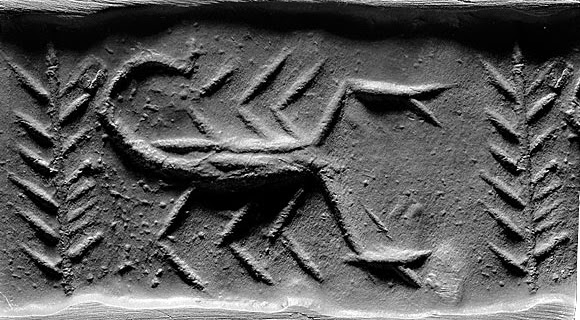







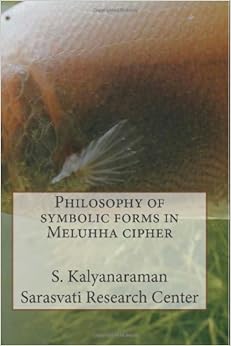









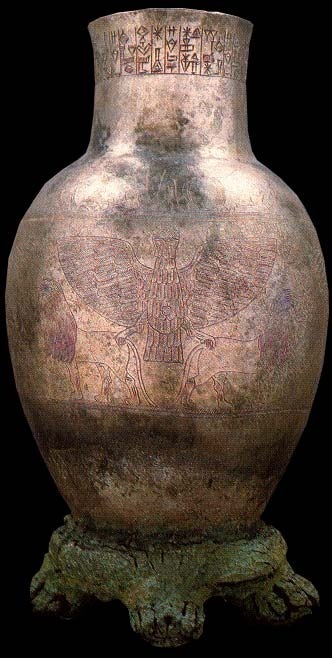















 VHP president Pravin Togadia urged a small
VHP president Pravin Togadia urged a small 

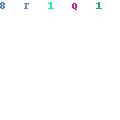




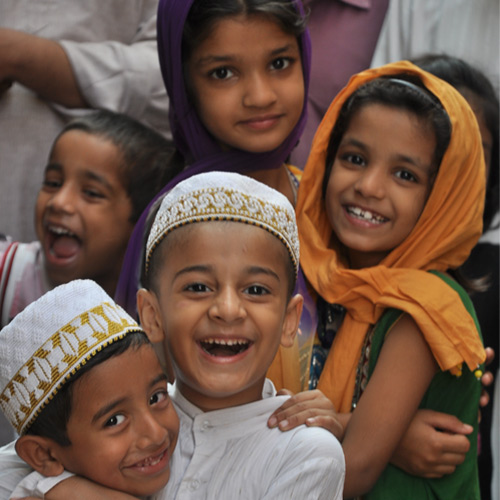





























 Kaushik R
Kaushik R  Rajeev Mantri
Rajeev Mantri  Jacueline Burton
Jacueline Burton  Minhaz Merchant
Minhaz Merchant 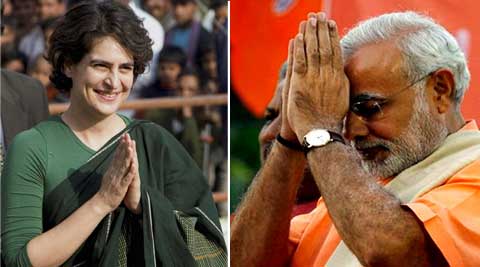


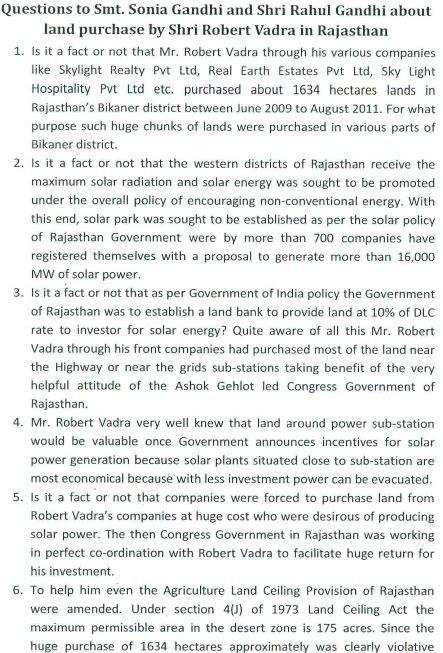

- Like(10)
4 hours ago- Like(5)
4 hours ago- Like(3)
4 hours ago- Like
3 hours ago- Like
15 hours ago- Like
6 hours ago- Like
4 hours ago- Like
4 hours ago- Like
4 hours ago- Like
4 hours ago- Like
4 hours ago- Like
4 hours ago- Like
3 hours ago- Like
3 hours ago- Like
3 hours ago- Like
2 hours ago- Like
2 hours ago- Like
1 hour ago- Like
1 hour ago- Like
1 hour ago- Like
23 minutes ago- Like
20 minutes ago- Like
12 minutes ago